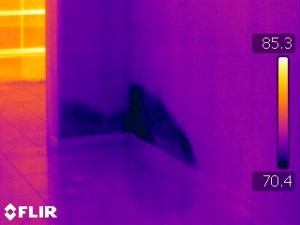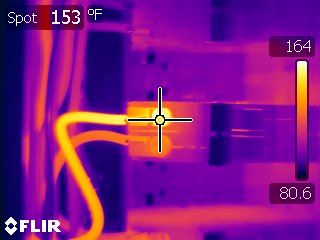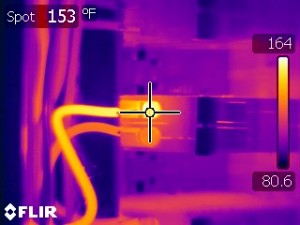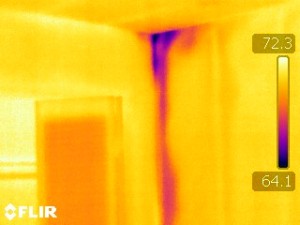Infrared thermal imaging technology is an amazing tool and has many building science applications. These applications include looking for moisture intrusion, electrical hot spots, leaking duct-work, to determine if concrete cells have been properly filled and commercial insulated flat roof systems to name a few. The infrared cameras we use are the same technology you may have seen on an episode of cops with a police helicopter using infrared to find the bad guy in the dark. This amazing technology allows home inspectors to find wet areas that are not visible with the naked eye alone. Whether it be a roof leak, or water intrusion around a window, or through stucco cracks. Thermal imaging technology adds value to a home inspection. Infrared does have some limitations…These include poor temperature differences between the exterior and inside of the home and shiny surfaces. Shiny surfaces cause a reflection. Infrared does not see through walls like some people think. Infrared thermal imaging measures temperatures. These temperature differences create a thermal image that is displayed on the camera screen. These images allow someone properly trained the ability to identify the cause of the image. The 2 pictures below are leaks that were on 2 different inspections. There was no visible evidence of moisture on either job. Infrared allowed me to quickly identify these problem areas…….To Be Continued

Hidden Moisture




